
 Mr. Swapnil Bhowmick
Mr. Swapnil Bhowmick
Brain Cancer: Causes, Types, Symptoms, Treatment, Stages | Medtalks
What is Brain Cancer?
Healthy cells in our bodies divide and replace themselves in a controlled manner throughout our lifetimes. Cancer begins when a cell is changed in such a way that it multiplies uncontrollably. A tumor is a mass made up of a collection of these aberrant cells.
Tumors are formed by most malignancies, however, not all tumors are malignant.
Tumors that are benign, or noncancerous, do not spread to other parts of the body or cause new tumors.
Tumors that are malignant, or cancerous, crowd out healthy cells, disrupt physiological functions, and rob the body of nutrition.
Cancers continue to grow and spread via direct extension or through a process known as metastasis, in which malignant cells migrate through the bloodstream to other parts of the body.
Carcinoma, sarcoma, melanoma, lymphoma, and leukemia are the most common cancers.
1. Carcinomas arise in the skin, lungs, breasts, pancreas, and other organs and glands, and are the most commonly diagnosed cancers.
2. Lymphomas are lymphocyte malignancies.
3. Leukemia is a type of blood cancer. It normally does not form solid tumors.
4. Sarcomas develop in the body's bone, muscle, fat, blood vessels, cartilage, and other soft and connective tissues. They are not very prevalent.
5. Melanomas are malignancies that develop in the cells that produce skin pigment.
What is Brain Cancer & How Does It Affect You?
Although these growths are commonly referred to as brain tumors, not all of them are cancerous. Malignant tumors are referred to as cancer.Malignant tumors can aggressively develop and spread, obliterating healthy cells by consuming their space, blood, and nutrition. They have the ability to spread to many places of the body. Tumor cells, like all other cells in the body, require blood and nutrition to thrive. Benign tumors are those that do not infiltrate neighboring tissue or spread to distant locations.
Brain Cancer: Cure vs. Remission
For centuries, doctors have used the word “cure” to describe a medical condition that’s completely gone and will never come back. For example, if you have appendicitis and doctors remove your appendix, you’ve been cured. In the language of cancer, “cure” works differently.
Doctors can give you their best perspective, based on statistics from large groups of people, on whether or not your cancer will come back. But no doctor can guarantee that you’ll be cured.There are two reasons for this:
1. Doctors still don't know everything there is to know about the condition.
Rather than using the phrase "cure," most medical experts prefer to use the term "therapy." You are deemed cured if you receive therapy and your cancer does not return for the remainder of your life.Another important term is "remission." It indicates that your cancer symptoms have subsided. Remission differs from a cure in that it does not always persist for the rest of your life.
Symptoms of Brain Cancer
Symptoms aren't always present in brain tumors. Your doctor may not even detect some (such as pituitary tumors) unless they perform an imaging test such as a CT scan or an MRI for another reason.Brain cancer manifests itself in a variety of ways. However, some of them are brought on by other ailments. Testing is the only method to know for sure what is causing your symptoms.
Symptoms can be caused by:
The symptoms of primary and metastatic brain tumors are very similar.
2. Weakness
3. Clumsiness
4. Difficulty in walking
5. Seizures
Symptoms that are less specific include.
2. Vomiting and nausea
3. Problems with vision
4. Speech difficulties
5. Changes in mental capacity or emotional response with time
Symptoms may appear slowly enough for you and your family to miss them. They appear suddenly and make you think you're having a stroke.
Carcinogens
Radon
This gas is found in small levels in nature and is completely harmless. However, radon tears down the lining of your lungs if it piles up indoors and you breathe it in.In nonsmokers, it is the leading cause of lung cancer. Although you can't see or smell radon, a particular test can be used to determine its presence in your home. Some state radon offices provide free kits.
Asbestos
Asbestos' tough, microscopic fibers help to strengthen products such as roof shingles, ceiling tiles, and automobile parts. However, if these fibers break free and are inhaled, they can become trapped in your lungs.
Tobacco
It doesn't matter if you're a smoker or inhaling someone else's cigarette smoke. Tobacco contains at least 70 compounds that are known to cause cancer by destroying DNA.Although smokeless tobacco appears to be safer, it can also cause cancer. Even modest smoking increases your risk, so speak with your doctor about quitting methods.
Diagnosis of Brain Cancer
To determine if you have an issue with your brain or brain stem, your doctor will ask you questions and perform a physical examination.A CT scan of your brain may be performed. This examination is similar to an X-ray, except it provides more information in three dimensions. To highlight issues on the scan, the doctor will usually inject a dye into your circulation.
A brain tumor's treatment is determined by various factors, including your age, general health, and the size, location, and type of tumor.Many questions concerning brain cancer, therapy, side effects, and the long-term outlook will arise for you and your loved ones. This information is best obtained from your healthcare team. Please don't be afraid to inquire.
Overview of Brain Cancer Treatment
Brain cancer is notoriously difficult to treat. The majority of treatment plans entail the collaboration of numerous doctors. The following people could be on your team:
Neurosurgeons are doctors who specialize in the brain, i.e., specialists in the brain and nervous system
Oncologists are doctors who specialize in cancer, i.e., cancer specialists
Conclusion
Brain tumors are hard to detect because they might not produce classical symptoms. It becomes important to get screened regularly. Speak to your general physician for screening tests and get them done to stay informed.
Kidney Stones

Mr. Swapnil Bhowmick
A motivated student of Medicine & Surgery (MBBS) at R. G. Kar Medical College & Hospital, Kolkata, having a knack for reading and composing medical literature. When he's not writing content for MEDtalks, Swapnil is usually looking up the latest trends and innovations in Medicine.


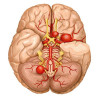

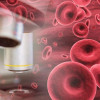

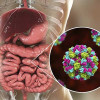
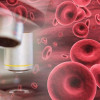




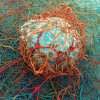

Please login to comment on this article